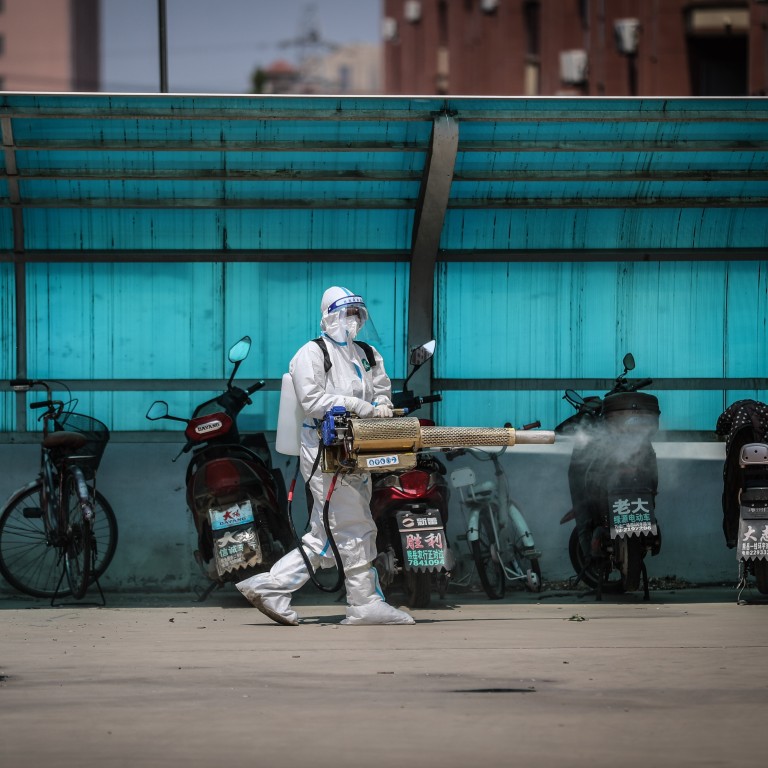
Coronavirus: Hong Kong eases stance on quarantine-free travel to mainland China with a more targeted approach
- List of risk levels for mainland places published by National Health Commission will be used for government’s ‘Return2HK’ scheme
- Officials on Saturday declared all of neighbouring Guangdong province would be classified as medium risk only to change decision hours later
Questions were raised over the transparency and consistency of the risk-level classifications used for the government’s “Return2HK” scheme, which exempts Hongkongers from compulsory 14-day quarantine when returning from the mainland.
Under the new policy, the scheme will follow the risk levels that are in force on the mainland – which usually cover a smaller district, a village or even a single building, rather than the province- or municipality-wide designations that Hong Kong previously issued.
By drastically reducing the size of the mainland areas deemed higher risk, the move will avoid the need for many Return2HK travellers to undergo the compulsory quarantine they were facing under the old system.
In a statement issued late on Monday evening, a government spokesman said that from Tuesday, the list of risk levels for places on the mainland published by the National Health Commission would be adopted.

04:15
Hong Kong-based Indians pitch in to help fight Covid-19 outbreak back home
The list of medium- or high-risk areas would be uploaded to the Return2HK scheme website, the spokesman said.
“Hong Kong residents who have visited any area on the mainland being classified as a medium- or high-risk area … in the past 14 days prior to and upon the day of arrival in Hong Kong, will not be exempted from compulsory quarantine under the scheme upon their entry into Hong Kong,” the statement said.
The spokesman said Hong Kong had maintained close communications with the mainland authorities on epidemic prevention and control measures.
The issue came into focus on Saturday after officials declared all of neighbouring Guangdong province would be classified as medium risk for Covid-19. However, by the evening, authorities greatly reduced the defined area to a residential building in Guangzhou city’s Liwan district, where an infected 75-year-old woman was found to have the variant first seen in India.
The initial decision on Guangdong also raised questions on how justified it was to classify the country’s largest province, which has around 126 million people, as a medium-risk area because of one infection in a city district.
Hongkongers departing from a medium-risk area would not be able to enter the city under the Return2HK scheme.
The designation of the residential building in Liwan means Hong Kong residents returning to the city from this building cannot be exempted from quarantine under the scheme.
Newly detected old infections ‘shouldn’t count’ towards Hong Kong’s tally
Government pandemic adviser Professor David Hui Shu-cheong said it would be better for the public to know the criteria for defining different Covid-19 risk levels, so travellers would have a better understanding of why a longer period of quarantine could be necessary.
“A place with high risk is usually one with a high caseload with lots of cases of variants,” Hui said. “Those with medium risk usually just have problems with the number of infections but are not struggling with variants.”

Earlier this month, the Return2HK scheme was suspended for those returning from two other provinces because of the Covid-19 risk. On May 15, the government announced that travellers from Anhui and Liaoning would not be eligible to use the scheme after the two provinces were put onto the list of medium- or high-risk places. That day, three new local Covid-19 cases were reported in Anhui and nine, including five asymptomatic ones, in Liaoning.
The inconsistent practice could be due to differences between Hong Kong and the mainland in designating risk zones, and a province’s proximity to the city.
China hits 500 million doses in rush to get 40 per cent vaccinated
Respiratory medicine specialist Dr Leung Chi-chiu said the mainland adopted a small community-based approach in designating risk zones.
“The mainland government will designate an area as medium risk even if there is only one confirmed case, but their areas are much smaller,” Leung said.
On the mainland, an area defined with a higher risk level is usually confined to a village, a residential estate or a building.
But prior to the policy change Hong Kong used a province or municipality as a precise unit for an area of medium or high risk.
Leung said the blanket arrangement did not cause much uproar when implemented on Anhui and Liaoning as fewer residents were returning from these provinces, but putting a halt on the quarantine-free scheme for those coming back from Guangdong, where many Hongkongers had business or family ties, could have a much bigger impact.

